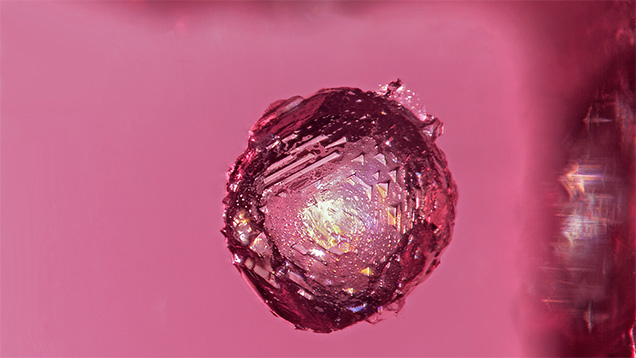Chondrodite in Red Spinel from Mogok, Myanmar

Myanmar, formerly known as Burma, is one of the world’s leading sources of gemstones. This includes red spinel with remarkable color, clarity, and appearance. A 1.507 ct red spinel collected from the Thit Saint Kone mining area in Mogok is part of GIA’s research collection. Its inclusion scene is dominated by a single round crystal with small trigons and a rough surface texture (see above). The crystal was identified as chondrodite by Raman spectroscopy. Chondrodite is a magnesium-rich variety within the humite mineral group. This mineral requires relatively high temperature and pressure conditions to form, which are found in the Mogok Metamorphic Belt. Chondrodite forms during contact metamorphism of magnesium-rich limestones and felsic intrusions.
Since chondrodite and spinel are both found in metamorphosed Mg-rich marbles, it makes sense that they occur in association. Nevertheless, the combination of both minerals has rarely been documented in gems and, as such, is a potential indicator of Burmese origin in gem-quality red spinel (M.M. Phyo et al., “Spinel from Mogok, Myanmar—A detailed inclusion study by Raman microspectroscopy and scanning electron microscopy,” Journal of Gemmology, Vol. 36, No. 5, 2019, p. 423).



